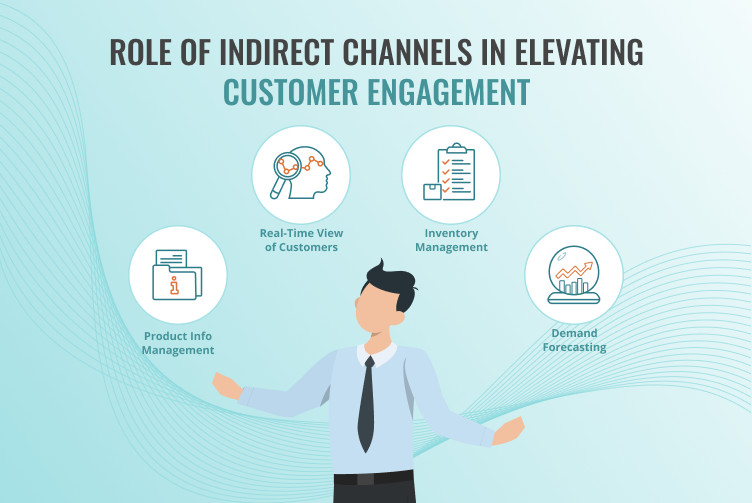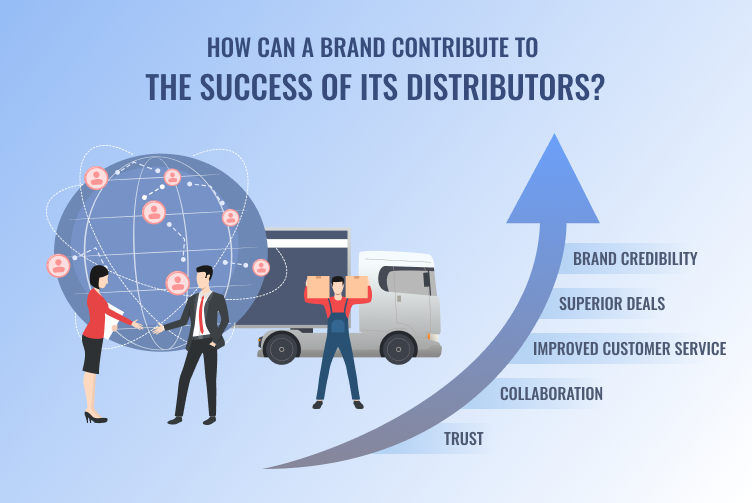Brands opt to sell their products or services through indirect channels to increase their reach and drive up sales. In uncertain economic times, companies have been known to earn more revenues and profits through indirect sales channels, including retailers and distributors. This is true across sectors – traditional as well as modern. For instance, Jay McBain of Forrester Research estimates that “64% of the spending in the technology industry flows through indirect sales.”
That said, companies do face their share of challenges when selling through indirect sales channels. Channel-based partnerships are not a “magic bullet” that can transform a business overnight. As a case in point, despite the growing size of IT spending, McBain predicts that “the size of the indirect channel will remain stagnant by the end of this decade.”
Furthermore, brands sometimes struggle to achieve digital transformation when managing a wide network of indirect channels. Some of these challenges pertain to carrying out effective communication, establishing profound operational visibility, nurturing customer relationships, and sustaining high performance. In addition to the same, brands need to align their business goals with their channel partners to achieve more sales.
This begs the question – how can technology address these challenges for brands selling through indirect channels? That’s precisely what this article sheds light upon as it elaborates on the viability of integrated distributor solutions.
Why Brands Must Integrate Their Distributor Systems
Global brands often struggle to achieve visibility on distributor networks and sales channel partners. Lack of business visibility is among the major challenges that hamper them from leveraging their indirect sales.
In fact, a lack of channel visibility can lead to drastic business implications for brands. These can revolve around the following:
- Calculating the partner’s revenues and incentives
- Tracking operations conducted by any channel partner
- Understanding why distribution partners are losing sales deals
- Analysing the product (or service) verticals where they are most (or least) successful
In the long run, companies lacking business visibility can lose their competitive advantage in the consumer market. An integrated distributor system can improve visibility, thus enabling brands to overcome visibility-related challenges.
Related Reading: Challenges of Managing Distribution Channels Sales Across National Boundaries
Along those lines, it’s noteworthy that data is now the “fuel” of the modern business economy. However, companies depending on channel partners do not have access to real-time data on their indirect sales. Further, brands are unable to leverage different forms of data originating from different channels. For instance, most distribution partners use disparate data systems, which are not integrated with the parent company.
As expected, channel partners focus more on closing deals than on delivering sales data. This means organisations receive sales data from their partners either monthly or quarterly – instead of daily or weekly. Thus, brands are unable to derive valuable insights from their channel data, which can hamper digital transformation.
Can an integrated distributor solution (or platform) enable digital transformation for brands operating through channel partners? Let’s discuss that in the next section.
Advantages of an Integrated Distributor Solution
With a centralised platform, an integrated distributor solution can help brands gain complete visibility over their channel network. An integrated solution connects various business functions through technologies like:
- Customer relationship management (CRM)
- Enterprise resource planning (ERP)
- Mobile apps
- Cloud analytics
Here is how an integrated solution can improve visibility:
- Simplifies data analytics for extracting meaningful insights to drive better decision-making
- Enables in-depth data collection from the entire chain of indirect sales partners, thus helping brands identify new sales opportunities.
- Enables brands to track customer behaviour and their changing expectations.
- Tracks each channel partner’s recent activity and uses partner data for performance analytics.
Here is how any B2B brand can benefit from investing in an integrated distributor solution:
- Leverage B2B collaboration tools to improve communication with indirect distributors and reduce costs.
- Optimise inventory management (in the case of manufacturing and supply chain companies).
- Integrate a growing distribution channel network into the business strategy.
- Improve order fulfilment rate through streamlined operation, thus improving customer satisfaction and reducing operational costs.
- Use the extracted customer insights to improve product development, market segmentation, and marketing campaigns.
- Scale up business operations with a growing network of global distributors.
The Way Forward with Integrated Distributor Solutions
As elucidated above, brands dependent on indirect sales channels find it challenging to achieve digital transformation. This is due to a host of reasons like isolated systems, lack of visibility, and poor relationships with distributors, among others.
As a technology company, Amshuhu provides customised distributor solutions to organisations to easily integrate their business operations. Our distributor solutions can streamline your business’s operational workflows, assist in scaling up operations, address unique customer requirements, drive holistic visibility, boost productivity, and save time – allowing you to seamlessly implement digital transformation.
Struggling to achieve digital transformation? Let us help you resolve your business problems. Get in touch with an expert today!




